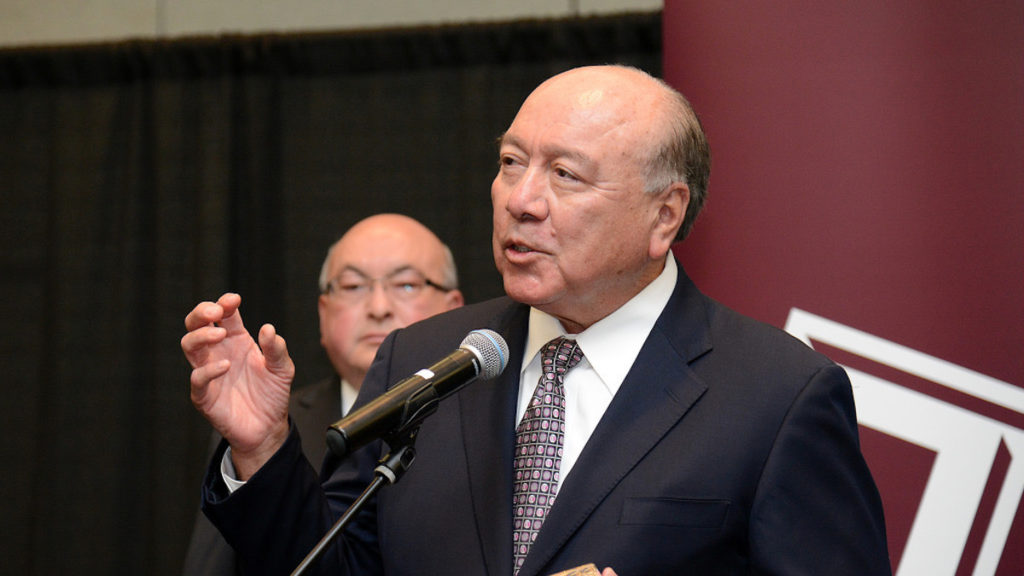
Texas Border Business
By State Senator Juan “Chuy” Hinojosa, February 2021
Texas often prides itself on being a low-regulation state that puts the free market ahead of all else. While this approach does work in some situations, often on a short-term basis, it can also have dire consequences as demonstrated by millions of Texans left without power and/or water.
To understand how the human-side of this disaster happened, we have to take a look at how we got here. In 1999, Texas deregulated its energy market. This meant that instead of cities or other local entities completely controlling the supply of energy to customers, the provision of electricity would be broken up into three components – generation, transmission, and retail. Under this new regime, a customer would have the choice between various retail electric providers, with the hopes that such a move would lower prices. However, as we have experienced before and are learning yet again – you often get what you pay for.
As part of the change to a deregulated energy market, prices were no longer fixed by the government. Companies were instead encouraged to compete to attract customers. With that competition came fewer rules from the state by which each of these players in the energy market had to abide.
Unfortunately, this system created incentives for energy companies to cut corners and invest as little as possible in order to maximize their profits. It would be easy to just blame the energy companies for doing this, but it is the system that the state created that is truly to blame. When electric generators are told they should take certain actions, like winterizing their power plants, but that simply remains a suggestion, then most companies will not do so out of fear that their competitor will choose not to and ultimately make more money or attract more customers. Situations like these are why we have government regulation, and we need to take a hard look at what is and is not working in the energy market in Texas.
One question you might be asking yourself is where does ERCOT fit into all this? Undoubtedly by now, you have heard or read something about ERCOT and the (not-so) rolling blackouts it implemented across the state. Sadly, this past week ERCOT did not live up to its name – the Electric RELIABILITY Council of Texas. Too many Texans were made victim of what proved to be a very un-reliable grid, and concrete steps have to be taken to ensure it never happens again.
Following deregulation, ERCOT took a larger role in the energy market in Texas. Now that retail electric providers could purchase their electricity from anywhere in the state, some entity needed to be in charge of managing the market of producing, buying, selling, and transmitting electricity all across Texas. In 2002, ERCOT was made into an independent organization with a board that consists of representatives from the energy companies, the state, and the public. However, ERCOT is still subject to regulations by the Public Utility Commission (PUC) and is thus still under the control of the state.
The state therefore needs to take a look, top to bottom, of how electricity is generated and provided to the public. While ERCOT played a role in this disaster, they are not the only ones responsible. What actions did state leaders take or not take that led to millions of Texans being left in the cold without power for days? Why did our power plants prove to be so inferior to those in other areas of the country that felt the same cold, but did not have the same devastating power outages? These questions and many more will be considered at an upcoming Senate Committee on Jurisprudence hearing, of which I serve as the Vice-Chair. I intend to ask these questions and not only get to the bottom of what happened, but more importantly shed light and what needs to change.
At the outset of this inquiry, we already know quite a bit. First we know that despite numerous elected officials claiming that the outages were the fault of wind turbines that froze, the truth is that the failure of renewable energy was dwarfed by the failure of fossil fuel plants. We know this because a senior official at ERCOT gave us the facts about what power generation was knocked offline by the cold, and those facts showed that thermal power production (that is nuclear, coal, and natural gas) accounted for around two-thirds of the lost generating capacity. Especially hard hit were natural gas plants who struggled to get supply because transmission lines froze and power to pump the gas out of the ground was unavailable.
But it didn’t have to be this way. Ten years ago much of the state experienced a freeze that knocked numerous power plants offline. A study was conducted by federal regulators to determine how to prevent this from happening again, and part of the recommendations made were to winterize power plants. However, given the lack of regulations in Texas around energy production, those solutions remained recommendations, not requirements. One area of the state, El Paso, that is not part of ERCOT and is instead part of a federally regulated grid implemented these solutions and the results this past week were striking – only a few thousand people lost power for mere minutes.
Moving forward, I am confident that we will learn the details of what went wrong and how we can fix it. We must resist the temptation to believe this is a once-in-a-lifetime event that we don’t need to plan for again. With climate change making our summers hotter and winters colder, the demand on our energy grid is only going to intensify and we have to be ready for it. The solutions exist – more stringent regulations that put people ahead of profits, the adoption of smart technology like robust energy storage, and treating electricity as a true utility that we all have a right to have and enjoy and that remains reliable when we need it most. We have a responsibility to ensure these solutions don’t remain ideas on the shelf, but rather are put into action.















